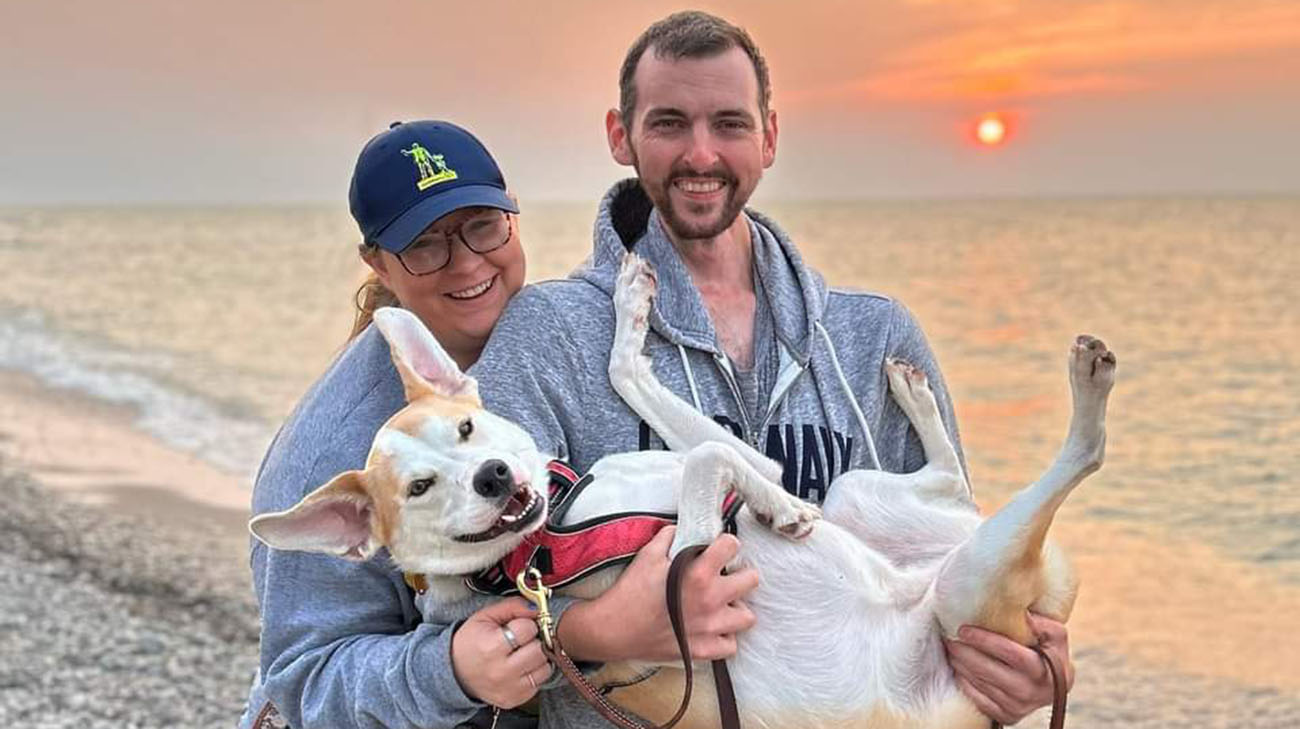
Aaron Agler had a choice in 2020. The then 29-year-old driver for a shipping company could endure more rounds of chemotherapy, with a minimal chance of curing his cancer type. Until this point, the treatment hadn’t proven to be as effective as Aaron and his care team had hoped.
Or the Cortland, Ohio, resident could opt for a therapy only administered once before, in another country outside the United States, to a patient with nasopharyngeal rhabdomyosarcoma, a rare type of soft tissue sarcoma that formed in the top of his throat and was slowly destroying his pharynx --the muscular tube essential for breathing and swallowing. However, while the high doses of radiation required for this treatment would likely rid Aaron of cancer, it would also destroy healthy tissue, leaving lasting side effects.
Aaron started standard chemotherapy and radiation in early 2018, shortly after his diagnosis. The way his body responded to treatment began to follow a pattern. Aaron would receive chemotherapy. Then he would undergo a tracheostomy to help with his breathing prior to undergoing radiation. His tumor would shrink. His care team would remove his trach, and the tumor would eventually grow back. He went through three long cycles of this treatment regimen.
“Chemo wasn’t working. Really, nothing was helping at that point,” says Aaron, who still has difficulty speaking and shares his gratitude for longtime girlfriend, Danielle Styer, who helps him communicate. “But we never gave up hope.”
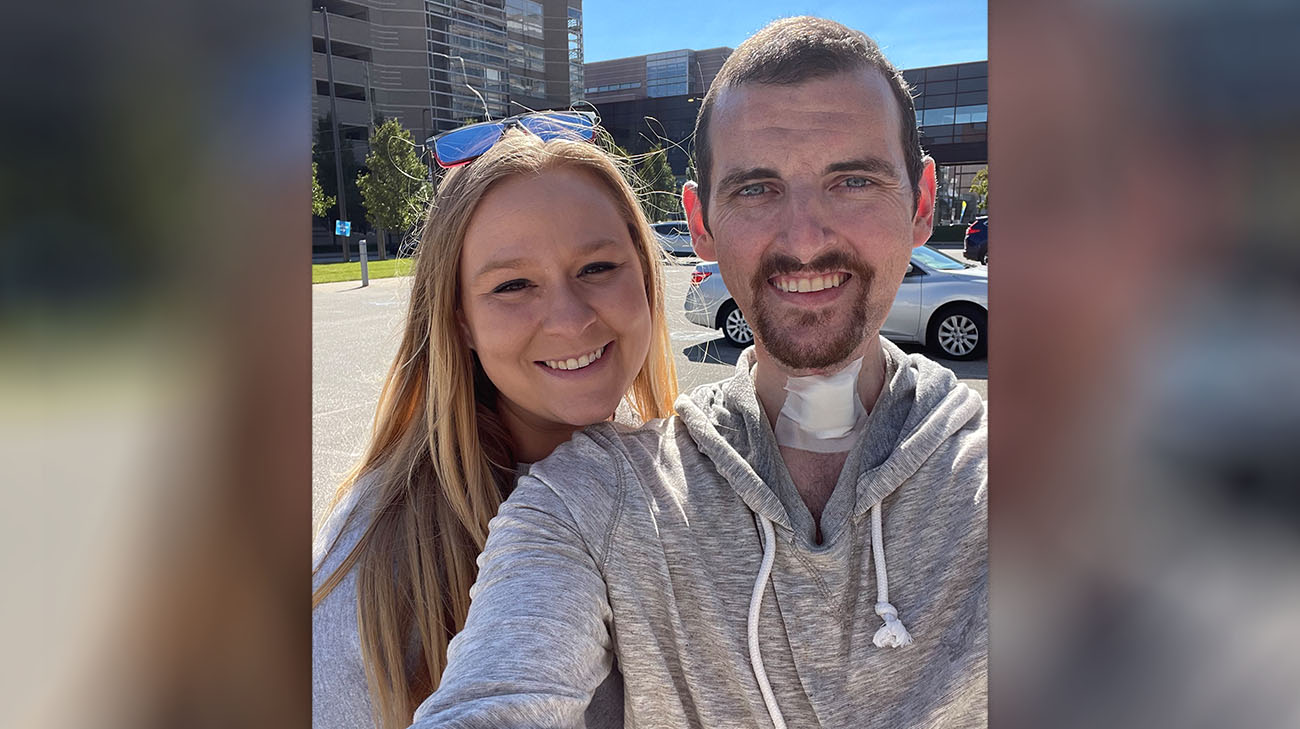
Aaron is incredibly grateful for his support system, including longtime girlfriend, Danielle. (Courtesy: Aaron Agler)
Adds Danielle, speaking on the seventh anniversary of the couple’s relationship, “Aaron is the most positive person in the world. Everything has its struggles, and we have made these decisions knowing that. We just want Aaron here, and he knew the type of radiation Dr. Koyfman was recommending was his last chance. So, he grabbed it.”
Shlomo Koyfman, MD, a radiation oncologist at Cleveland Clinic Cancer Institute, met with Aaron and Danielle after more traditional forms of chemotherapy and radiation were unsuccessful. He felt confident his suggested course of action -- stereotactic body radiation therapy (SBRT) –would destroy the cancer. Aaron would receive five high-dose radiation treatments over two weeks. However, because he had received prior radiation, this second round of treatment would likely cause substantial side effects. If the tumor responded, Aaron would probably develop a hole in his throat that would require reconstructive surgery and result in permanent impaired abilities to eat and speak.
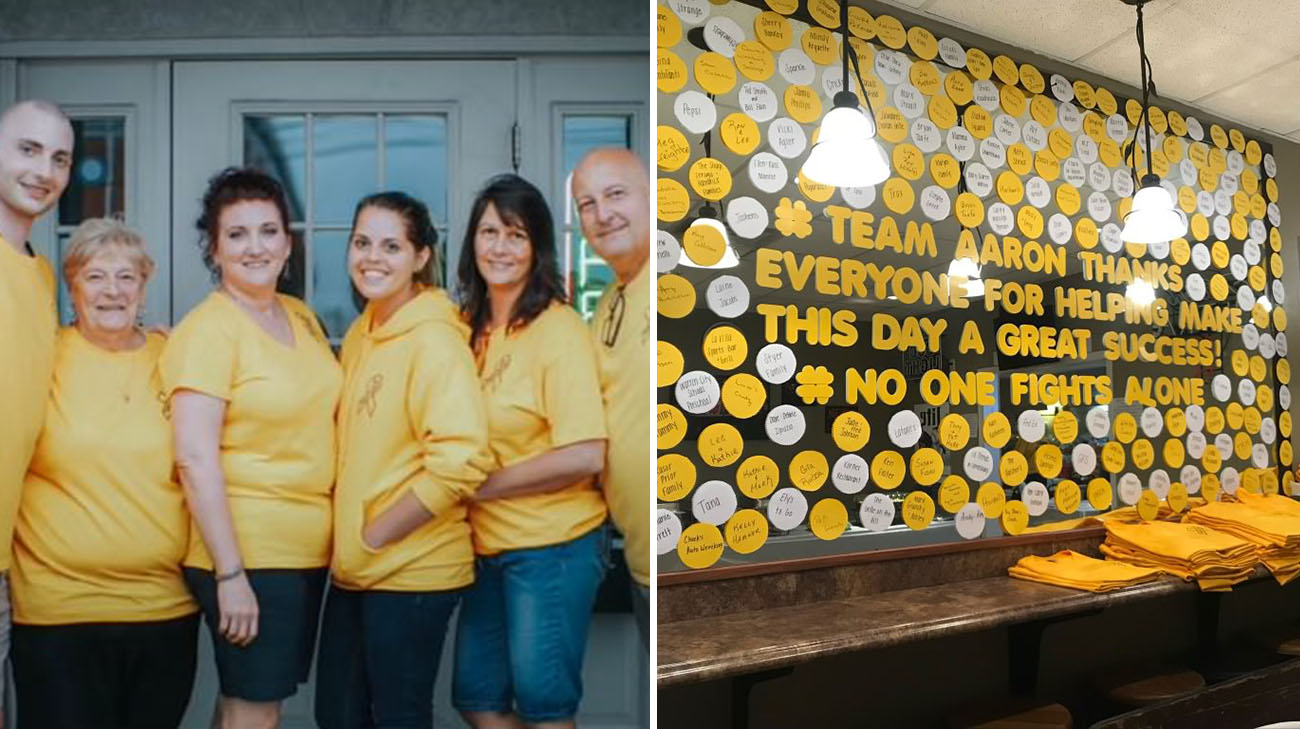
Aaron's family and friends supported him by organizing a benefit shortly after he was diagnosed. He attended virtually since he was in the hospital recovering from his first tracheostomy. Everyone dressed in yellow in recognition of sarcoma cancer. The event had a large turnout including (left to right) Aaron's brother, Garrett, grandmother, Joan, mom, Stephanie, sister, Brandi, stepmom, Tammy, and father, Jim. (Courtesy: Aaron Agler)
“Aaron has one of the more treatable and curable sarcomas. But in his case, chemotherapy and conventional radiation only shrank his tumor temporarily,” says Dr. Koyfman. “In fact, when it returned in the back of his throat, it was growing rapidly, up to the size of a grapefruit.”
The tumor grew so large Aaron was hospitalized and underwent both a tracheostomy, to keep him breathing, and the insertion of a percutaneous endoscopic gastrostomy (PEG) tube to administer nutrition.
Dr. Koyfman adds that cancer in the neck and head can be more complicated to treat for a second time using SBRT re-irradiation than other forms of cancer because, “so many things are in the way –the throat, the brain, the eyes, the carotid arteries, the tongue, and none of them are expendable. I was very honest with Aaron. I said SBRT might cause a lot of problems, including severe bleeding, infection or tissue breakdown, but it was one of the only remaining options.”
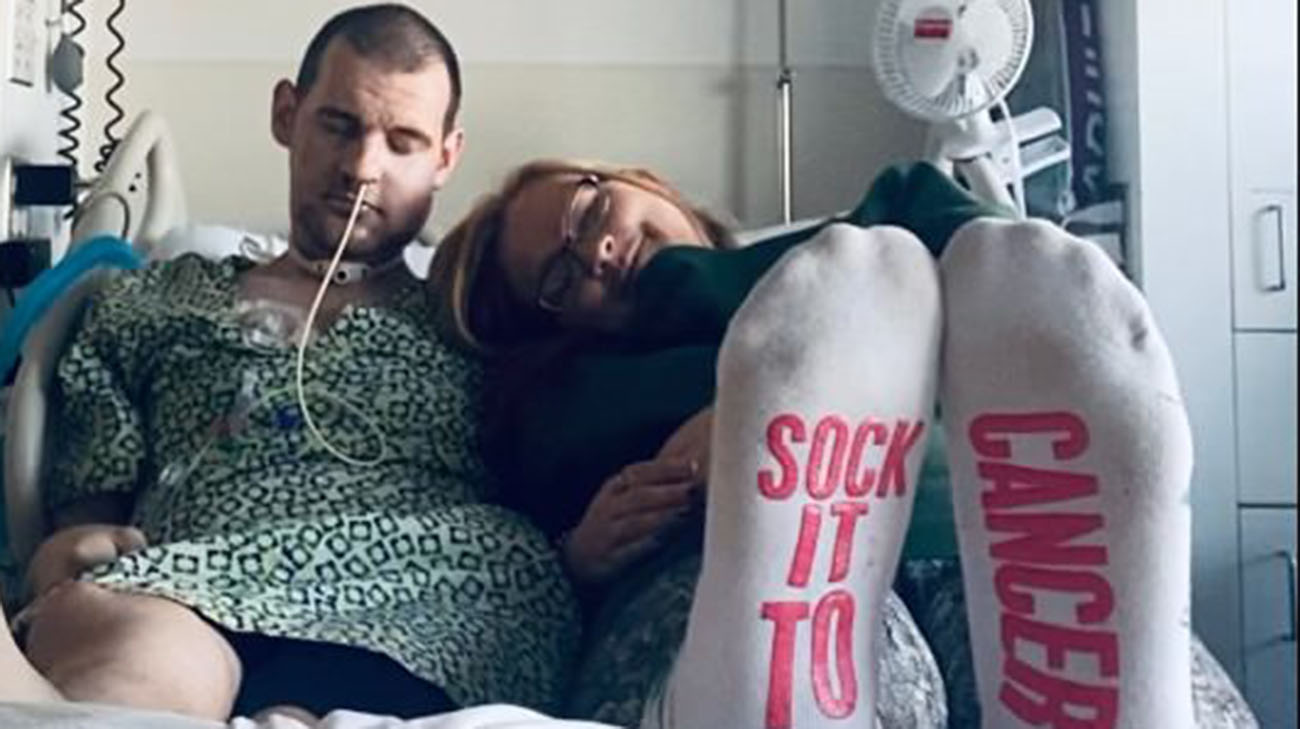
Those who know Aaron marvel at his positive mindset throughout all the ups and downs he's experienced after his diagnosis. (Courtesy: Aaron Agler)
Working in consultation with radiation oncologist Erin Murphy, MD, and hematologist oncologist Peter Anderson, MD, who were among the team of Cleveland Clinic specialists who first treated Aaron, Dr. Koyfman presented SBRT for Aaron’s case, alongside Aaron’s decision to move forward with the treatment.
Aaron underwent the therapy in April 2020. He was on pain medication after his last treatment. Because the pain was so severe he had to go on a liquid diet, which in turn led to permanent trismus, a condition where a person’s jaw muscles become so tight they can’t open their mouth. Additionally, as dead tissue from the radiation treatments became infected and abscessed, Aaron developed a hole in his throat and neck.
“Antibiotics helped some,” explains Dr. Koyfman, “but he was in constant pain and could barely move his neck or open his mouth. He needed the surgery to remove all the dead tissue and repair the hole.”
In October 2020, a four-surgeon team of experts operated on Aaron for more than 20 hours. Each surgeon performed an essential role: Jamie Ku, MD, an otolaryngologist and head and neck surgeon, removed the dead tissue; Michael Fritz, MD, an otolaryngologist and head and neck surgeon, completed a free flap procedure to cover and repair the hole in Aaron’s throat; neurosurgeon Pablo Recinos, MD, an expert in skull-based surgical procedures; and otolaryngologist Raj Sindwani, MD, handled any issues related to Aaron’s sinuses.
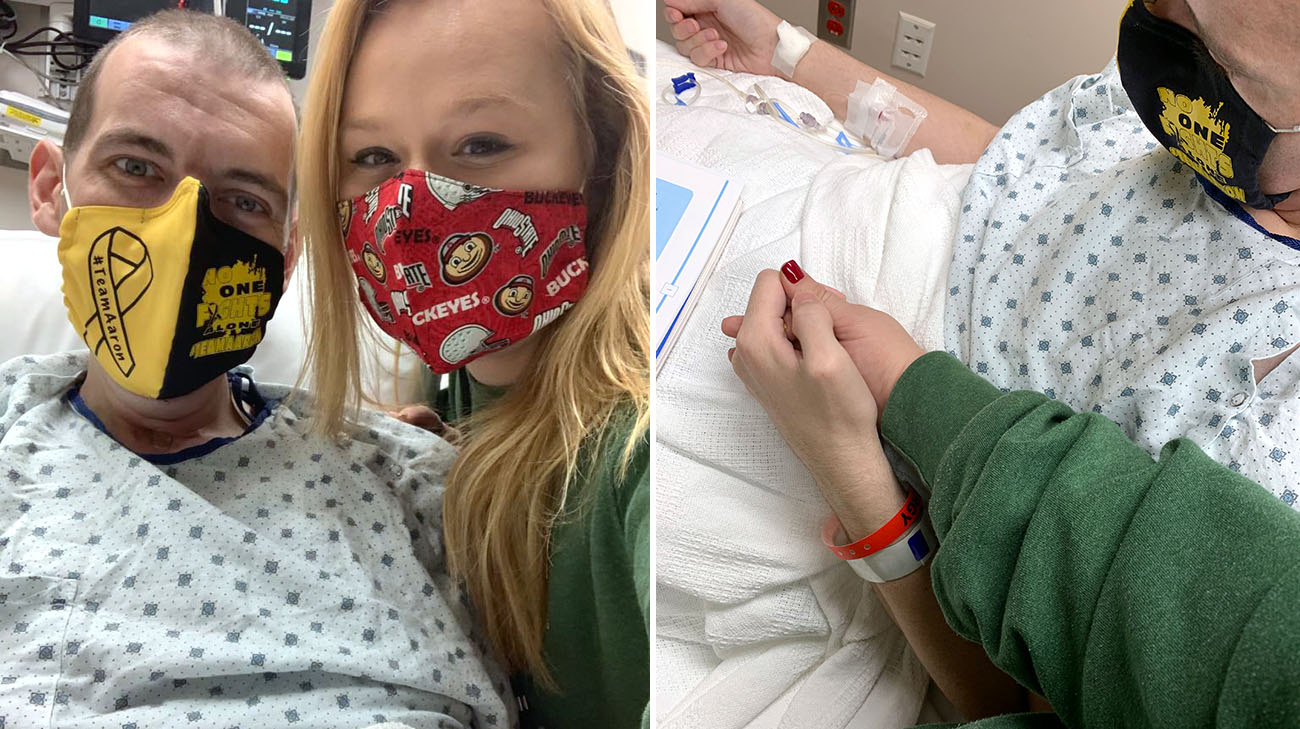
Aaron and Danielle before Aaron underwent his surgery. (Courtesy: Aaron Agler)
Aaron was confident the marathon operation would be successful: “I wouldn’t be here without it. My team of caregivers have all become like a second family to us.”
Surgeons removed nearly all the dead tissue –there was no remaining cancer found –and repaired the defect with a free flap reconstruction. Aaron recovered in the hospital for two weeks after surgery. His only remaining pain was in his leg where doctors harvested tissue for the procedure. That didn’t stop him from walking the halls with his physical therapist.
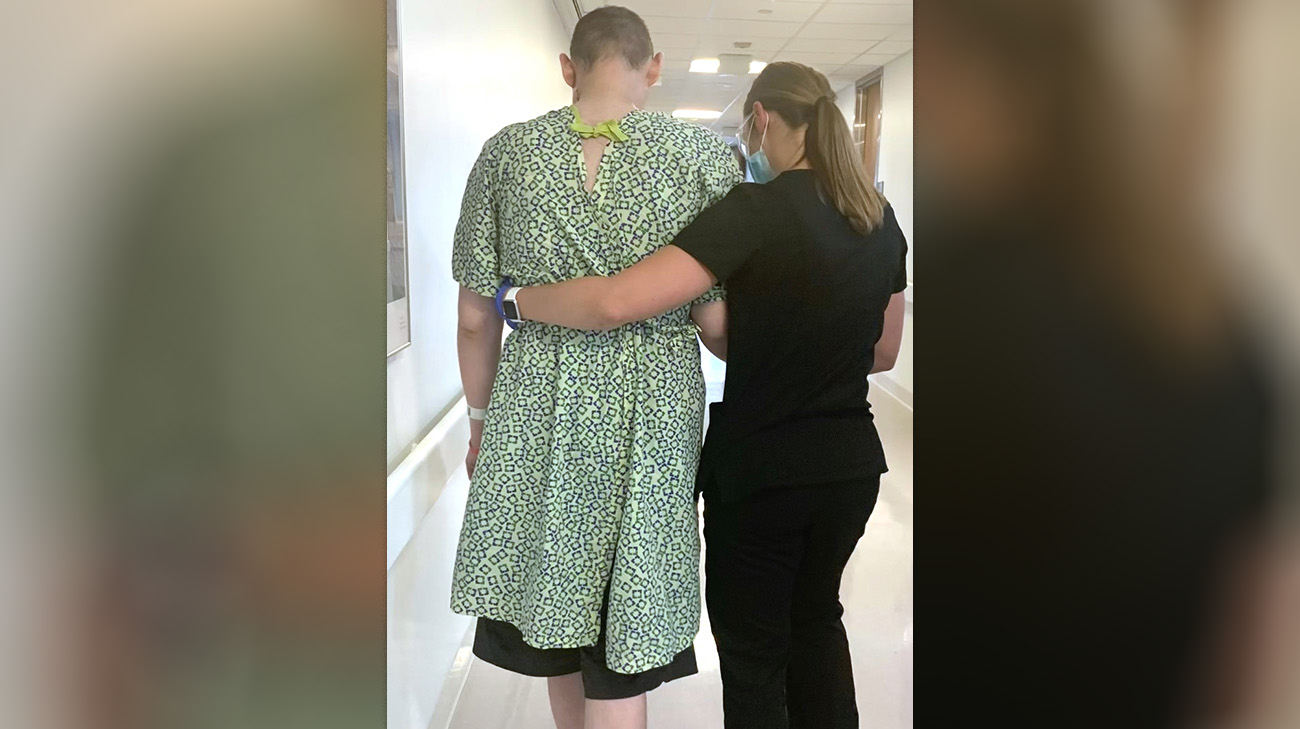
Aaron walking the halls at Cleveland Clinic, after his surgery, with his physical therapist. (Courtesy: Aaron Agler)
He continued home care for the ensuing three weeks. As soon as he no longer needed the service and received approval from his care team, Aaron and his family took a celebratory trip to Hawaii.
And while he still has a variety of medical issues related to the cancer and treatment, he is grateful to be alive and enjoying life with Danielle and their rescue dog, Harper, who rarely leaves Aaron’s side on their daily runs, and even accompanies Aaron and Danielle on regular camping trips and excursions to Disney World.
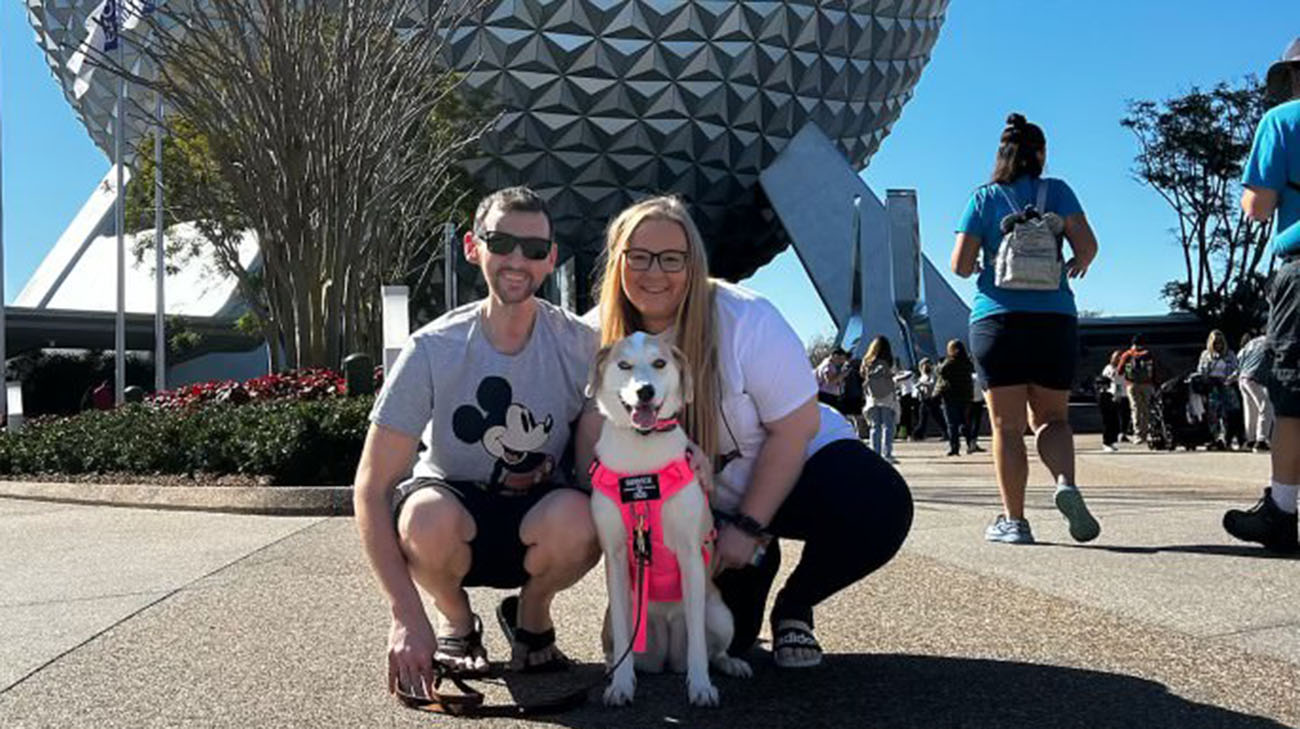
Aaron, Danielle, and their dog, Harper, at Disney World. (Courtesy: Aaron Agler)
“I went into the SBRT and reconstructive surgery knowing the risk factors. The alternative outcomes could’ve left me much worse, and I beat those odds,” exclaims Aaron. “I’m not able to open my mouth far, but I’m still able to sustain an oral liquid diet. I’ve also gotten very creative with the blender. I have a difficult time speaking, but my immediate family and close friends can understand me well. One of the many things this journey has shown me is how to adapt to my situation, and I’ve done well with that,” states Aaron.
Dr. Koyfman marvels at Aaron’s determination and positive mindset as he nears the five-year mark with no evidence of cancer. “He’s a tremendous person, courageous and thoughtful, and with a phenomenal attitude. He could be complaining about his condition but lives life with gratitude. Aaron was willing to take a risk, and he did it. It’s pretty incredible.”
Aaron and Danielle hope sharing the story of Aaron’s arduous medical journey will inspire others. “Even when I felt there was no way out, I never gave up hope,” says Aaron. “I didn’t know how, but I just knew in my heart there was going to be a breakthrough. And if you have a medical team willing to do anything to save your life and a support system to stand behind you, that is the best thing you could ever have.”
Related Institutes: Cleveland Clinic Cancer Center

